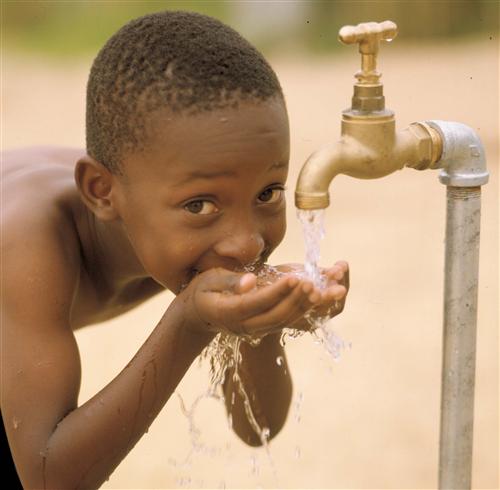Water is a fundamental human need and required to support all life. A lack of clean water leads to the spread of diseases, and creates hardship for humans, animals and the environment. Access to water also brings economic benefits and improvements to living standards. It is therefore vital that governments efficiently distribute clean water to all citizens.
Water infrastructure consists of man-made structures and facilities used to abstract, retain, treat, convey and deliver water to users, and to collect, transport, treat and dispose of wastewater. Typical infrastructure includes: groundwater well-fields, water supply schemes, sewage treatment facilities, dams, river water abstraction works, inter-basin transfers (bulk transfers), and canals.
Water supply schemes distribute freshwater to users, from surface water (rivers, dams, etc.) or groundwater (aquifers). These range from large schemes in urban centres, characterised by complicated supply networks, to smaller rural supply schemes. Dams are often an integral element, serving to retain or impound water. Water is abstracted, treated and pumped to users. Sewage is collected and transported via a network of pipes (sewerage) and pump stations to treatment facilities, which remove contaminants from waste water before it is released.
Water infrastructure supports life and aids the protection of public health, but can have a significant impact on the environment. Practices that encourage the sustainable use and management of water-related infrastructure must be promoted. Improved management practices, efficient water use, suitable pricing of water, and a catchment scale approach to protection can all help in achieving sustainable operations.
While there are significant benefits to the installation of water infrastructure, the cost of constructing, maintaining and repairing damage to infrastructure can be high. Timely on-going maintenance is necessary to realise these benefits in the long-term and ensure sustainability. If a system is well maintained, it can operate safely over a long time period. A new system that is not properly operated can threaten public health more than an older system that is appropriately managed. Those responsible for the management of infrastructure need to establish ongoing oversight, monitoring, evaluation, maintenance and replacement of assets as needed, to maximise the productive life of infrastructure.
Southern Africa is a water scarce region with an erratic rainfall distribution pattern, which in recent years has led to frequent droughts—local, national and regional. Managing water is therefore particularly vital to both the population and the economy. Unfortunately, as for other infrastructure assets, the effect of under-investment and substandard maintenance on water infrastructure takes many years to become apparent and therefore, during times of budgetary cuts, these critical assets often suffer the most.
Chapter Summary
This chapter covers the following concepts and material:
-
The main bulk water transfer schemes in the Orange-Senqu River basin
-
The main dams in the Orange-Senqu River basin
-
An overview of small scale water supply and groundwater supply schemes in the Orange-Senqu River basin
-
The main irrigation schemes in the Orange-Senqu River basin
-
Future development options for water infrastructure in the Orange-Senqu River basin
-
Water Treatment Facilities
-
Sanitation infrastructure.

Making water available to every part of the basin.
Source:DWAF South Africa 2002
( click to enlarge )
